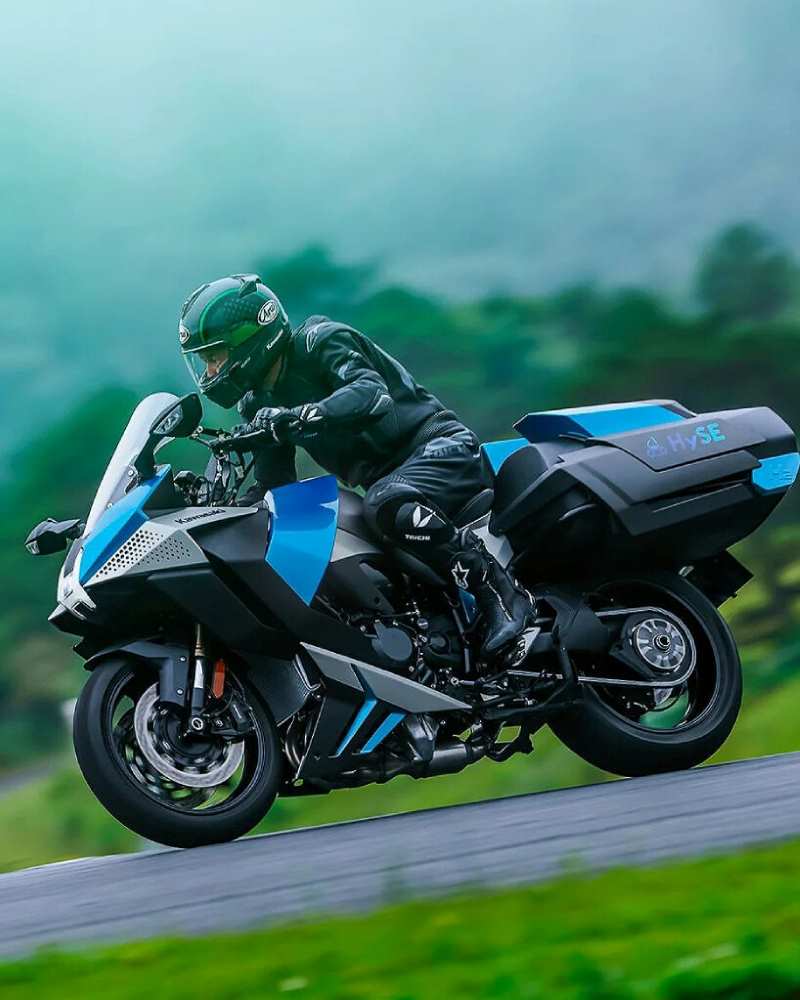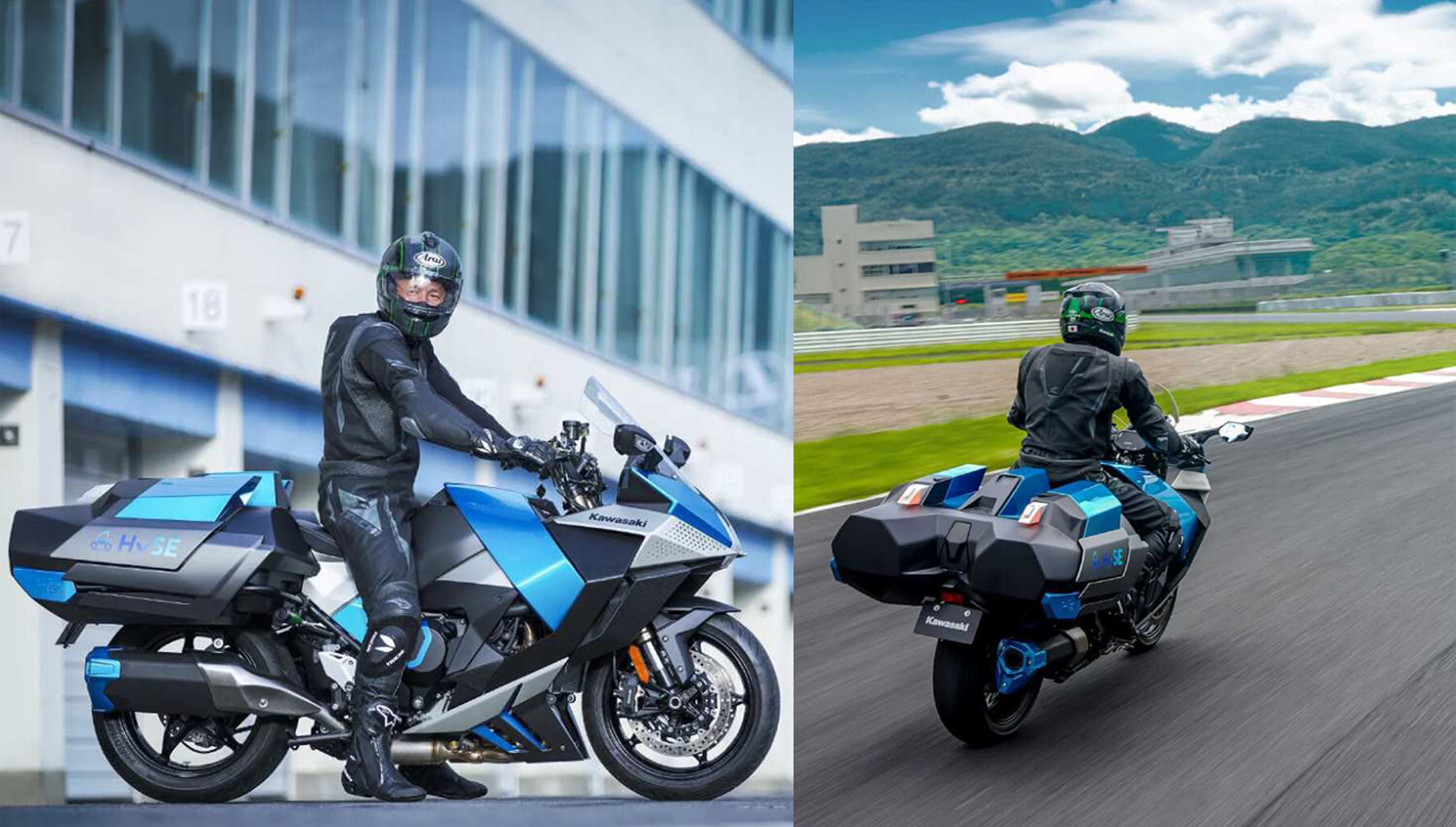
Kawasaki conducted the world’s first public demonstration of its hydrogen internal combustion engine (ICE) motorcycle on July 20th at the Suzuka Circuit in Japan. To make the motorcycle run on hydrogen instead of conventional fuel, Kawasaki had to make several modifications, especially to the engine. They modified it so that hydrogen fuel, which can help reduce carbon emissions, can be injected directly into the cylinders, where it is burned to produce the power needed to propel the motorcycle.
First Public Demonstration

When the rider twists the throttle, Kawasaki’s hydrogen ICE motorcycle still roars and vibrates, despite not using conventional fuel. This is because the engine mechanics and combustion process are similar to those of a gasoline engine.

During its first public demonstration in Japan, the manufacturer pointed out that its main byproduct is water, which is released as steam. This makes hydrogen engines much cleaner compared to gasoline engines, which emit pollutants such as CO2, carbon monoxide, and nitrogen oxides.

Carbon Neutral Initiative for 2030
Kawasaki admits that during the demonstration, a small amount of motor oil is burned along with the hydrogen, but adds that this only results in the production of a very small amount of CO2. Nonetheless, they claim that total emissions are significantly lower than those of traditional gasoline engines.

So far, Kawasaki Motors is conducting research and development to achieve a functional hydrogen ICE motorcycle for commercial use. This is part of their carbon-neutral initiative for motorcyclists in the early 2030s. The manufacturer says that the timing of commercial availability may vary depending on the hydrogen fuel supply infrastructure and the state of legal regulations in each country.
How a Hydrogen Internal Combustion Engine Motorcycle Works
A hydrogen internal combustion engine (ICE) motorcycle works similarly to a traditional gasoline engine but uses hydrogen as fuel instead of gasoline. Here is the detailed technical process:
1. Hydrogen Storage
Hydrogen is stored in high-pressure tanks, usually in gaseous form. These tanks are designed to be safe and lightweight, integrating into the motorcycle’s chassis.
2. Hydrogen Injection
The motorcycle’s injection system has been modified to handle hydrogen instead of gasoline. Hydrogen is injected directly into the engine cylinders through special injectors. Injection can be direct (Direct Injection, DI) or indirect (Port Fuel Injection, PFI), with DI being more efficient in terms of performance and emissions.
3. Hydrogen and Air Mixture
In the cylinder, hydrogen mixes with air. This mixture is crucial for combustion, as hydrogen, being very flammable, requires a precise air ratio to burn efficiently.
4. Combustion Process
Once the hydrogen and air mixture is in the cylinder, it is compressed by the piston moving upwards. At the peak of compression, a spark plug generates a spark that ignites the mixture. The combustion of hydrogen produces an explosion that pushes the piston down, generating mechanical movement.
5. Power Cycle
The piston’s movement is converted into rotary motion via the crankshaft. This cycle of compression, combustion, and expansion repeats in each engine cylinder, providing the necessary power to move the motorcycle.
6. Emissions
The main byproduct of hydrogen combustion is water vapor (H₂O). Unlike gasoline engines, significant emissions of CO₂, CO (carbon monoxide), or nitrogen oxides (NOx) are not produced. However, traces of CO₂ may be present due to the burning of small amounts of engine oil.
7. Engine Management System (ECU)
The engine control unit (ECU) has been reprogrammed to manage the specific characteristics of hydrogen, such as its high flammability and air-fuel mixture control. The ECU adjusts the amount of hydrogen injected and the ignition timing to optimize efficiency and minimize emissions.
Benefits and Challenges
Benefits:
- Emission Reduction: Emissions of polluting gases are significantly lower compared to gasoline engines.
- Clean Energy Source: Hydrogen can be produced from renewable sources, making the process more sustainable.
Challenges:
- Hydrogen Storage and Transportation: Requires specific infrastructure and advanced technologies to safely handle high-pressure hydrogen.
- Cost and Availability: The production and distribution of hydrogen are still costly and limited in many regions.
In summary, a hydrogen internal combustion engine motorcycle is an innovative and more environmentally friendly alternative to traditional engines, representing a significant advancement in sustainable mobility.






















